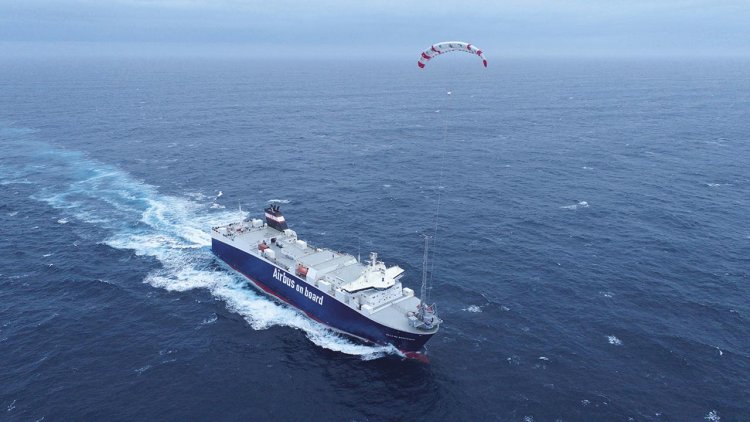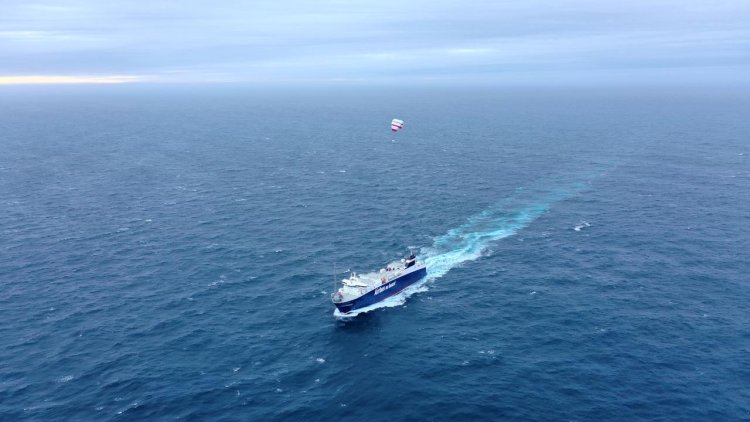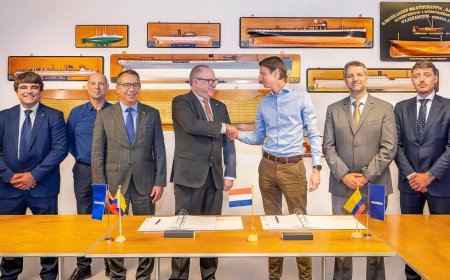First footage of Seawing kite system as wind propulsion takes off for commercial shipping
Airseas takes kite sail Seawing from concept to reality on Louis Dreyfus Armateurs' cargo ship chartered by Airbus, aiming to reduce fuel consumption and emissions from commercial shipping by an average of 20%.

France-based wind propulsion leader Airseas has issued the first pictures and video footage of its automated kite system Seawing in flight during ongoing transatlantic sea trials. This comes as the company announces the successful completion of the crucial initial stages of these trials, which are taking place on the vessel Ville de Bordeaux, as it transports aircraft components between Europe and the United States.
The footage shows the Seawing system in action, flying 200 meters above sea level, harnessing the power of the wind to propel the vessel and reduce the main engine load. Seawing aims to slash fuel consumption and emissions by an average of 20%. Combining expertise from the aerospace and maritime sectors, Seawing will use digital twins and advanced automation systems to ensure that the system can be safely deployed, operated and stored at the push of a button with minimal input or training needed from crew. The solution can be installed on virtually any type of commercial vessel.
The system is undergoing sea trials on the 154m ro-ro (roll-on roll-off) vessel Ville de Bordeaux, which is operated by Louis Dreyfus Armateurs (LDA) and chartered by Airbus, Airseas' minority shareholder and launch customer. A team of Airseas engineers is on board to test the system and gather data, with the operational support of LDA's crew and Airbus' Transport & Logistics department.
The first stages of the sea trials have successfully validated key steps such as the folding and unfolding of the wing, take-off and landing, and flights in altitude. The next phase will test the Seawing in a broader range of weather conditions and fine-tune the automation system.
In addition to the first system on the Ville de Bordeaux for Airbus, Airseas has also received firm orders from K Line, a Japanese shipowner who owns the fifth largest fleet worldwide, for five Seawing systems, with additional options to equip up to 51 vessels in total.
Vincent Bernatets, CEO of Airseas, said:
"Seeing the Seawing in action on a commercial vessel is such a proud moment for us, and the culmination of years of meticulous research and development. Testing a brand new technology in real-life conditions and while respecting the operational constraints of a commercial ship is an ambitious endeavour, and the solid progress of our sea trials is a testimony to the dedication of our team of engineers on board and on shore.
"With these strong initial results, we're more determined than ever to keep testing the system and collecting data, and accelerate our mission to scale up and rapidly deploy wind propulsion technology on vessels around the world. Immediate action is needed to tackle climate change and shipping's impact on GHG emissions; we are proud to have a solution that can help ships reduce their emissions right now, and accelerate the decarbonisation of the maritime sector over the coming years."
Antoine Person, Corporate Secretary of Louis Dreyfus Armateurs, commented:
"We are committed to playing an active role in reducing shipping's carbon emissions, starting now. We are proud to be associated with this project as a supplier and partner of Airbus, working for the success of this innovative wind propulsion solution alongside Airseas."
The deployment of Seawing on commercial voyages marks an important milestone for wind propulsion technology in the maritime sector. The shipping industry, responsible for nearly 3% of global GHG emissions, has very few solutions immediately available to start its decarbonisation journey and reduce its climate impact. A new generation of wind propulsion systems has been developed rapidly in response, and the Seawing constitutes one of the leading examples.


























































































































































